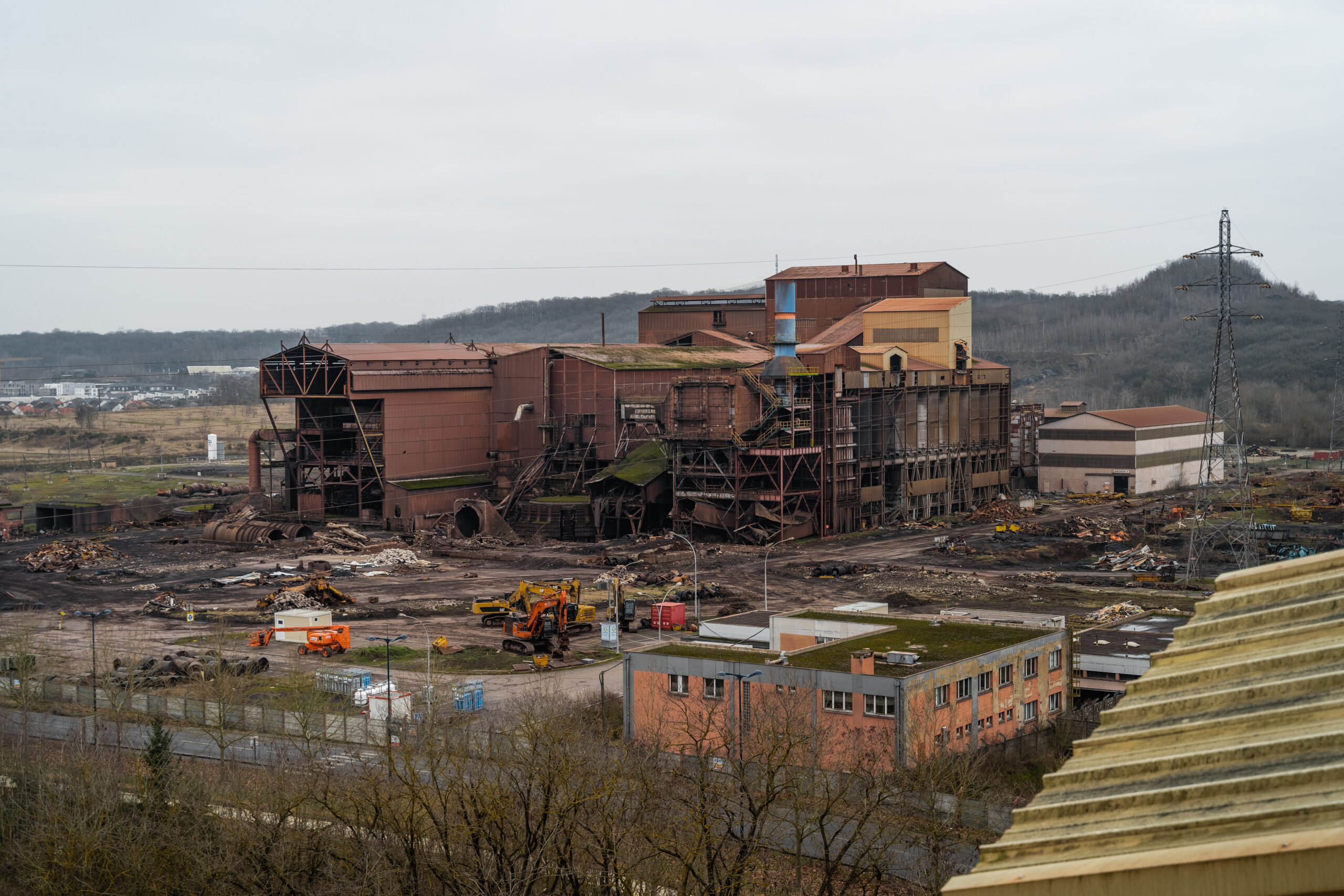
During an exploration carried out in the middle of the dismantling process, I and a friend were able to discover what was once the Sinter Plant with the largest sintering chain in the world. Because of the demolition process, we were not able to access all parts of the site and some were already disfigured, but we were nevertheless able to see the essential installations that constitute the heart of the factory.
But first of all, what is a sinter plant? In the chain of steelmaking, a whole series of factories are required for each step of the process. The generally best-known part is the blast furnace, a large tower visible from afar, a sort of large pot in which the cast iron is produced and will be used to shape the steel. But, to obtain this cast iron, iron ore is required. The sintering plant is the facility that sinters iron ore and prepares it so that it can be used in blast furnaces. The product obtained is then called « agglomeré » in French. The sinter plant therefore intervenes at the beginning of the steel manufacturing process.
In Rombas, the steel complex is enormous and included no less than 8 blast furnaces and a large steelworks, all of which have now disappeared. A first sintering chain was created in 1963. What makes this site special is that a second sintering chain was added in 1971 with a size of 400m2, making it the largest sintering chain in the world. Producing more sinter than necessary for the Rombas blast furnaces, it also sends part of its production to other sites. Following the gradual closure of the Rombas blast furnaces, the sinter plant, despite its success and after having survived for a few years by supplying ore to the Hayange blast furnaces a little further away, would eventually suffer the same fate.
The buildings and machines that we discover during our visit are colossal. The sintering process as used here dates from the beginning of the 20th century and was designed by two Americans, Dwight & Lloyd, who considerably revolutionized the productivity of iron ore processing compared to old methods. Next to the main sintering hall, we also discover the control room with its monitors. At the back of the site, enormous and menacing ‘pipes’ (electrostatic filters) lead to the blower house, which supplied the two large chimneys, destroyed well before our visit. We hardly venture outside the buildings to avoid being seen.
On the other side of the train tracks to the north of the factory, we discover other parts of the site, including the conveyors that connected the sinter plant and the blast furnaces above the road and the railway tracks. A few wagons still hang around here and there, with the water tower still standing further away. If we venture even further north, we cross the site of the old blast furnaces, now a vast plain covered in vegetation. The only remains still present today are the general store, old workshops and the large office, which are among the only traces of the steel industry in the region that will probably be preserved. Articles will soon be dedicated to these specific places.
ℹ️ Current state: demolished
